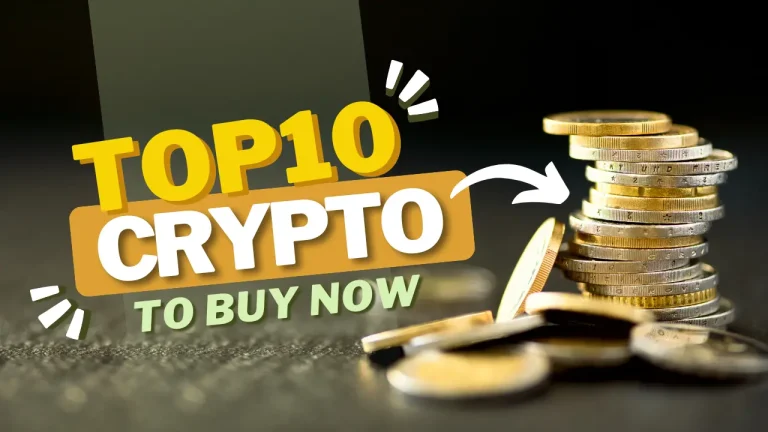If you’re new to the world of trading and wondering whether you can start with just $10, the answer is yes! In fact, many online trading platforms allow you to start with small amounts of money, and $10 is a good amount to begin your journey into trading. With the right approach, you can learn the basics and grow your skills, even with a small initial investment.
In this article, we will guide you on how to get started with trading for beginners using only $10.
1. Understand What Trading Is
Before you start trading, it’s important to understand what trading actually means. Trading involves buying and selling financial products, like stocks, currencies, or commodities, with the goal of making a profit. The price of these products changes all the time, and traders try to buy when prices are low and sell when they are high.
When you trade, you’re essentially predicting whether the price of an asset will go up or down, and making a decision based on that prediction. You don’t need a lot of money to begin trading, but you do need to understand the basics first.
2. Choose the Right Trading Platform
The first step in starting with $10 is to choose a trading platform. A trading platform is an online service where you can open an account, deposit money, and start making trades.
Things to Look for in a Trading Platform:
- Low Minimum Deposit: Look for a platform that allows you to start with a small amount, like $10.
- No Commission Fees: Some platforms charge fees when you buy or sell. Make sure you pick one with low or no fees to make the most of your $10.
- User-Friendly Interface: Choose a platform that’s easy to use and offers educational resources if you’re just starting out.
- Security: Make sure the platform is safe and regulated to protect your money.
Some popular platforms that let you start trading with small amounts of money include Robinhood, eToro, and Webull.
3. Start with a Low-Risk Asset
When you start trading with only $10, it’s important to focus on low-risk assets. Here are some options:
1. Stocks
Stocks represent shares in a company. Even with $10, you can buy stocks in small amounts, known as fractional shares. Many online platforms now offer fractional shares, which means you can buy a portion of a share of a company like Apple or Tesla.
2. Cryptocurrency
Cryptocurrency, like Bitcoin or Ethereum, can be a good option for small investors. Some cryptocurrencies allow you to buy small portions with as little as $1 or $2. Since cryptocurrencies can be volatile, be sure to start small and only invest what you can afford to lose.
3. Forex (Foreign Exchange)
Forex trading involves buying and selling currencies. The forex market is open 24/7 and allows traders to begin with very small amounts of money. Be sure to use proper risk management strategies, as forex can be risky.
4. Use a Demo Account to Practice
Before risking your real $10, it’s a good idea to practice using a demo account. A demo account lets you trade with fake money, so you can learn how the platform works and try out different strategies without the risk of losing real money.
Most trading platforms offer demo accounts, and it’s an excellent way to gain confidence and practice making trades before you dive in with your real money.
5. Learn Basic Trading Strategies
While $10 may not seem like much, it’s still important to have a plan when trading. Here are a few basic strategies for beginners:
1. Buy Low, Sell High
This is the most basic trading strategy. The idea is simple: you buy an asset when its price is low, and sell it when the price goes up. This way, you can make a profit on the difference between the buying and selling prices.
2. Day Trading
Day trading involves buying and selling assets within a single day. It’s a short-term strategy, and you’ll need to keep an eye on the market for price changes throughout the day.
3. Swing Trading
Swing trading is a medium-term strategy, where you buy an asset and hold it for a few days or weeks, hoping the price will rise before selling.
6. Risk Management: Don’t Bet It All on One Trade
When you start with $10, it’s important to remember that you don’t want to risk it all on one trade. Even experienced traders face losses, so it’s important to manage your risk.
Tips for Managing Risk:
- Start Small: Only use a small percentage of your $10 on each trade (e.g., $1 or $2).
- Set Stop-Loss Orders: This feature automatically sells your asset if the price falls to a certain point, limiting your losses.
- Don’t Get Greedy: While it’s tempting to chase big profits, it’s safer to focus on small, consistent gains.
7. Be Patient and Keep Learning
Trading is a skill that takes time to learn. Don’t expect to become an expert overnight, especially with only $10. As a beginner, your goal should be to learn the basics and make small profits over time.
Be patient and avoid rushing into risky trades. Keep reading about trading, follow news about the markets, and learn from your experiences. Over time, you’ll become more comfortable and confident.
8. When to Withdraw Your Profits
Once your $10 investment grows, you may want to take profits out. It’s important to regularly review your portfolio and decide whether to cash out some or all of your profits.
However, you don’t need to withdraw immediately. If your account is growing, you can reinvest your profits to continue learning and building your trading skills.
Conclusion
Starting with just $10 may seem like a small amount, but it’s a great way for beginners to dive into the world of trading. The key is to choose a user-friendly platform, practice with a demo account, use basic strategies, and always manage your risks.
Remember, trading takes time, and even small, steady profits can add up. So, start small, stay patient, and keep learning – your $10 investment could be the beginning of a successful trading journey!







